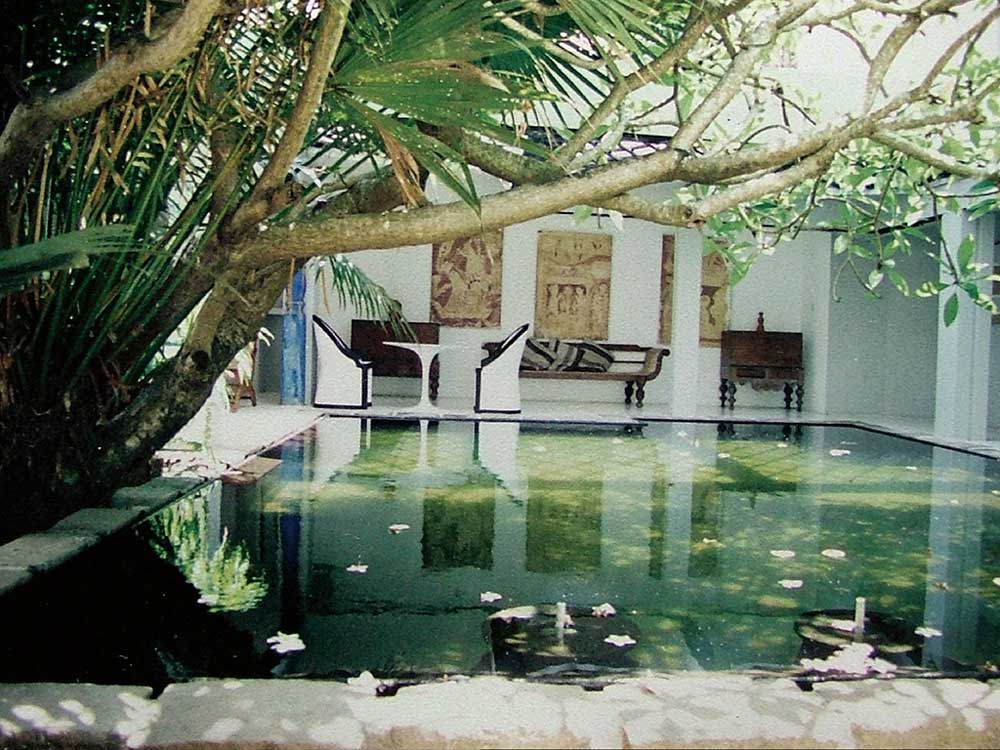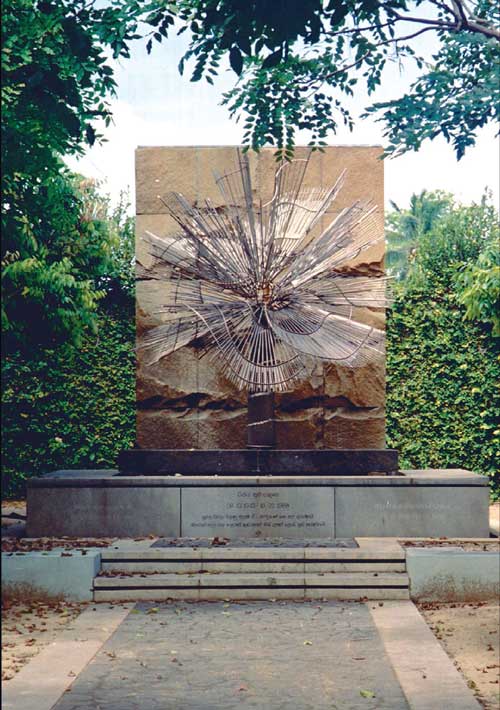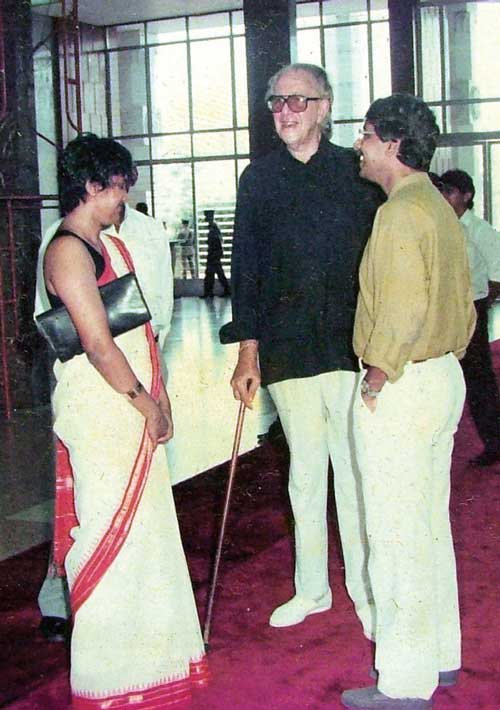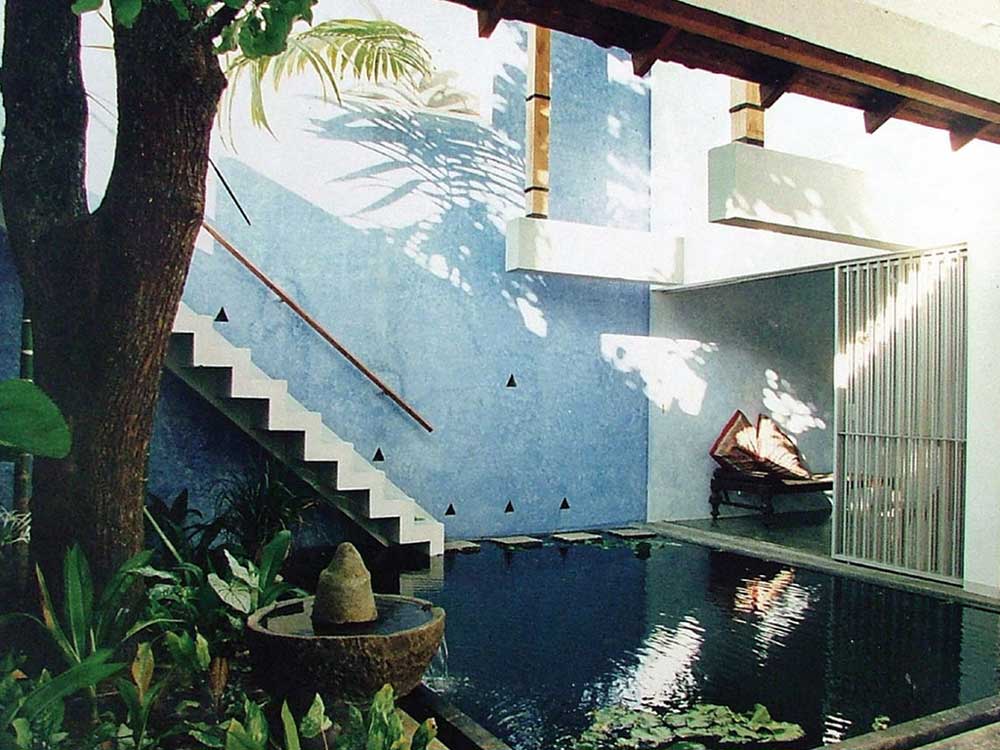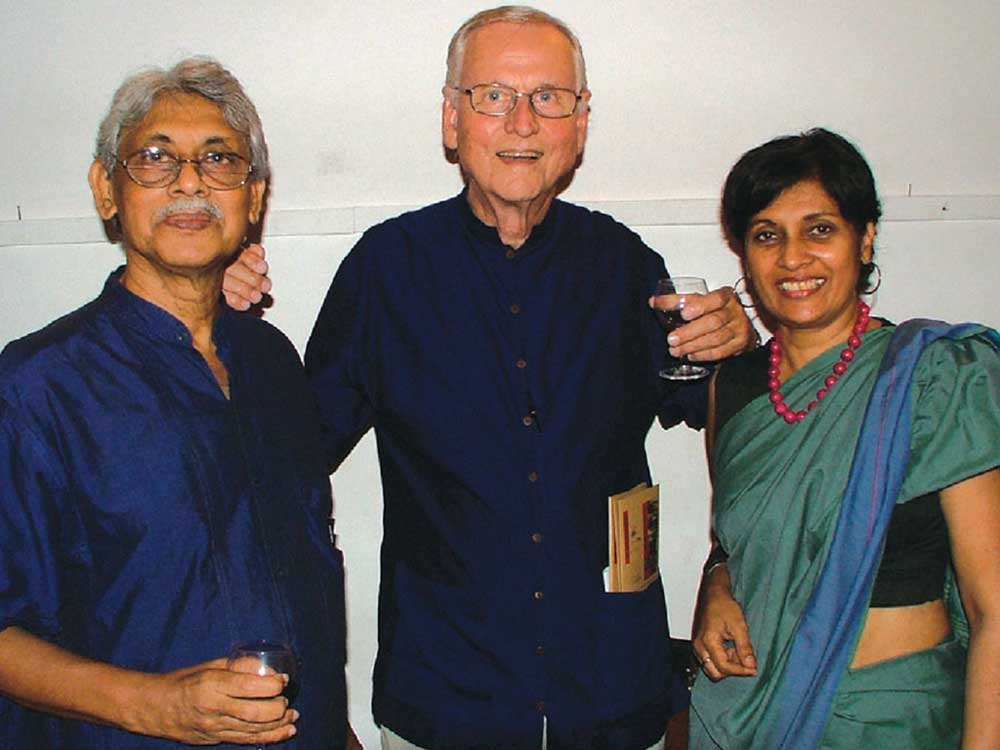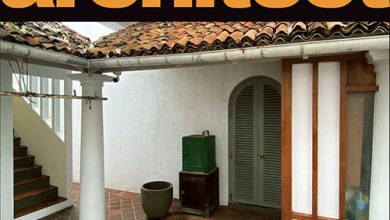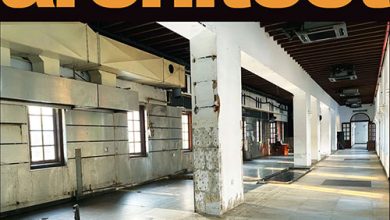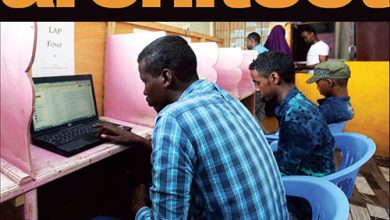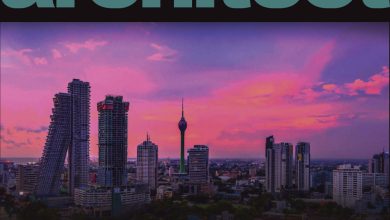RECOLLECTIONS OF A RENOWNED ARCHITECT
An interview by The Architect Anura Ratnavibhushana’s narrative & answers
BY Nicola Jayasundera and Susil Lamahewa
Q: Could you tell us about your childhood and who or what inspired you to embark on this journey?
Q: As an architect are there any colleagues or teachers that inspired you in your journey?
Q: What is your philosophy on architecture?
Q: What is your opinion on new architecture and Sri Lanka’s current building environment? Is there room for improvement, and if so, how?
Q: Sustainability and environmental consciousness are much talked about. What are your thoughts on this?
Q: What is your opinion on the current status of education in Sri Lanka, and is there a dire need for improvement and how can that be achieved?
Q: What advice would you give to aspiring architects based on your experiences and the current state of the industry?
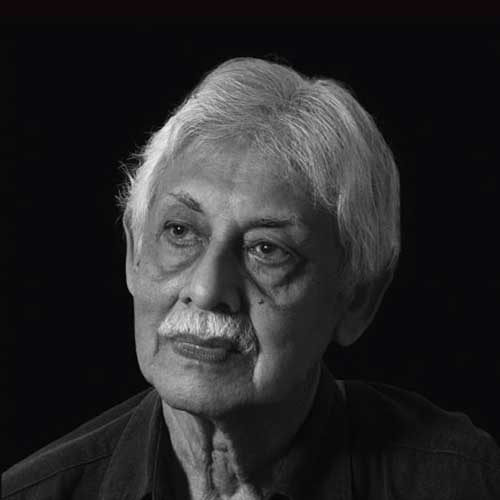
A: My parents nurtured us by giving us an interesting childhood. My book ‘Creating Simplicity’ (2009) has an essay recalling my childhood and also several other essays in various chapters answering most of the questions you intend on posing. A really interested reader may refer to my book.
I failed the university entrance exam twice to study engineering. But this Failure opened doors to explore other options. So I joined an engineering firm to become an engineer when the Katubedda architectural course was established in 1961. Being artistic I changed over to Architecture.
What we need is time for children to be idle and dream. I once asked Geoffrey Bawa, “What do you think, Geoffrey? Doing nothing is wonderful, isn’t it?” “Of course,” he replied; that’s the only time you can let your imagination wander. This is what the modern generation lacks perhaps due to a fault in the competitive exam oriented education system.
A: We were the first batch of architectural students in what is now the University of Moratuwa’s Faculty of Architecture. All our lecturers were practising architects. Some weren’t remarkable designers but they knew their craft and related technical skills. H. J. Billimoria used to draw plans and sections of Indian temples on the blackboard. Architecture is a craft you have to master. Dr. Roland Silva held us spellbound as he described our proud ancient architecture. Tom Neville Wynne-Jones was the last British Chief Architect of Ceylon in the Public Works Department. He lectured on materials and observing sleepy students would say, “If you don’t want to learn this, your job will be replaced by some other specialist.” Justin Samarasekera, the Chief Architect at the PWD, was the backbone of the pioneer architecture course at Katubedda.
Then came Geoffrey Bawa and Ulrik Plesner. They taught design and were clearly different from the others. One of my presentations focussed on historical details. I had displayed the cross section of timber work in the Maha Saman Devalaya and noted that the cantilevered roof beams were laid flatwise which was structurally weak. But Bawa whispered to me, “You know Anura, maybe they knew it and they didn’t care because it looks much more beautiful.”
Plesner taught us all the basics of design. The heights of tables, upright chairs, depth of wardrobes, size of toilets etc. He encouraged us to learn these by heart as we would need this information when we practise architecture.
There was Vasantha Chandraratna (Jacobsen), a pioneering female architect and also my batch mate. She worked with Bawa in designing the Sri Lankan Parliament in 1982. Her house is a beautiful blend of Scandinavian modernity and clean lines adapted to the climate, urban location and her need for peace and privacy. She gave up lay life and opted to become a Buddhist nun after she left Bawa’s office.
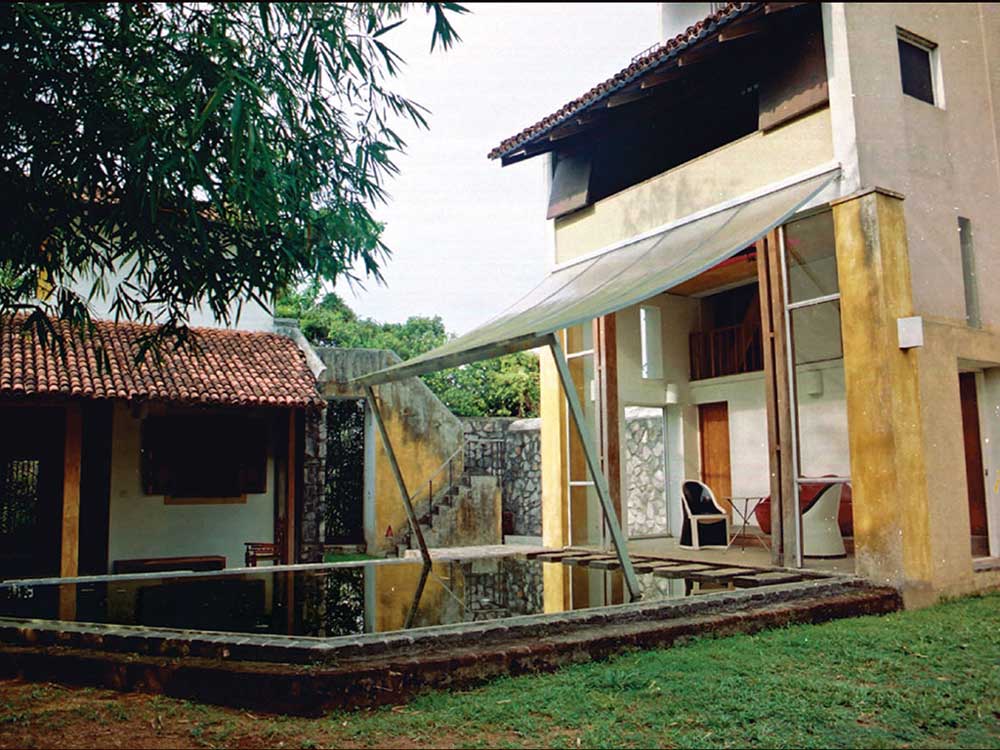
Somapala Kulasinghe was another interesting batch mate having had a background in engineering; he came into architecture with a scientific approach. His designs were precise, radical and contemporary even to this day. The India pavilion at the 1964 Industrial Exhibition in Colombo and the Milk Board kiosk, Peradeniya Gardens are two of his contemporary works.
There was Pheroze Choksy and Ismeth Raheem whose most memorable work is Cinnamon Lodge Habarana. It is a work of enormous effort, very contemporary yet embodying a Sri Lankan flavour and a delight to its users. Vasantha, Pheroze, Ismeth and I completed our architectural studies in Copenhagen and returned in 1970 to join Geoffrey Bawa’s firm ER&B.
A: Western architecture follows the philosophy of utility, firmness and delight.
I follow no philosophy, because it is limiting and confusing. Plesner described it beautifully, “Architecture is first a craft. With luck it can be art, and lastly, a philosophy when the other two are failing.” The main thing you must focus on is to make durable places and spaces for people to enjoy, love and uplift their spirit but fit for the climate. In the end it must delight the eye.

A: I’m terrified and appalled at the rampant visual free for all that prevails. Where are the pavements for pedestrians in Colombo and major towns? There is aesthetic chaos with dusty glass buildings, cladding and people walking on the streets because pavements are often used for parking vehicles and not a single large tree for shade except at a few notable roads. The beautiful view in between towns of paddy fields and lakes has been lost to road development that ignores the scenic assets sans coordination with urban planning.
A refreshing urban development programme that took place from around 2009 onwards in the outskirts of Colombo were enhanced with stunning lakes, beautiful avenues, pavements lined with trees. This laudable effort now seems defunct!
We talk about taking Sri Lanka to the world. But very little is being done to conserve our natural assets. The tourist board needs to address these issues in coordination with mega development projects. We can’t attract tourists when the country’s biodiversity and scenic beauty are ruined through ignorance.
Sri Lanka has over 25,000 man-made lakes out of which about 100 are large tanks. They are serene landscapes and priceless. If you look at Sigiriya now, you can see a four or five storey building rising up close to it. A blot in the landscape! Geoffrey Bawa demonstrated one effective way of camouflaging a building as at Kandalama Hotel.
The way forward to preserve the beauty and sanctity of these areas would be to limit these constructions no higher than the indigenous trees in the area. I submitted an illustrated proposal limiting heights of buildings and structures during the Covid period to relevant authorities. Suggesting that a group of UDA experts including irrigation engineers brainstorm this suggestion with improvements and follow up with legislation without delay.
Bawa set the first example with Bentota Beach Hotel, during the 1960s tourist development. His policy was to not exceed the height of a coconut tree. But now the southwest coast is littered with multi-storey buildings very near to the beach. Mega structures will not attract tourists who seek tranquil and serene natural environments that nature has bestowed on Sri Lanka. Stopping all development makes no economic sense. Build by all means, but keep the height within the tree canopy line. Revised regulations must regulate aesthetic and environmental aspects as well.
There was a project to light up the paths around Parakrama Samudra and possibly many other large tank bunds. I recommended installing glare free lamps on the land side of the path instead of facing the water which causes glare and ruins the view.
The UDA (Urban Development Authority) has done wonderful work at Diyatha Uyana and the region around the parliament complex. Removing the fence around Viharamahadevi Park was also a brilliant idea. Going down that road today is like driving through a garden city.
During Bawa’s time there was a competition to redesign Galle Face Green. He advised we shouldn’t lose sight of the horizon and vast open view. But today much of the horizon is giving way to a new city of skyscrapers. We must hope that climate change challenges will not adversely affect man’s grandiose aspirations.
A: Climate change is not a theory anymore. It’s real, and it’s gone beyond reversal. Scientist Dr. James Lovelock in 1979 and several other books that followed discussed this in his books. Uchita de Zoysa, author of ‘It Has to Be Climate Sustainability’ (2010) states that the “Earth is on fire, but not hot enough to act.” Nothing has changed 13 years later! Mankind continues to tear the guts out of Mother Earth for quick profit and to satisfy our greed and not our needs.
Everyone is ‘greenwashing’ now! The world economies are structured to depend on open ended consumption of the Earth’s resources but not sustaining it. And now the Earth is adjusting itself in order to stabilise. To understand what is happening, you have to understand deep ecology. Without understanding that our beautiful planet is virtually a living entity with an incredibly complex ecosystem that sustains all life forms in a comfortable state, there is no way we can rectify past mistakes in time to mitigate climate change, if we don’t change our excessive consumerist lifestyles.
All these green certifications are clever, but it has been implemented too little too late. We must consciously focus on smaller-scale, instead of single massive buildings and mega projects. The Earth will react through natural disasters to maintain equilibrium. Architects must upgrade their knowledge on deep ecology and when possible guide their clients ethically.
A: Our whole education curriculum must be rethought by a group of intelligent, wise and accomplished people and urgent reforms made. We also must allocate time for leisure and sports. If you inculcate these values in children, our future will be brighter.
In the 1960s and ‘70s, our drawings were presented in ink or pencil on small formats and not today’s expensive digital printouts. I pity modern day architectural students (and parents who pay) in Sri Lanka who submit 10-40 drawings! On many occasions I have said that we don’t need anything more than A3 for interim crits and an A2 for the final. Group work might end in A1 or A0 on rare instances. Block models can be very useful.
Huge projects mustn’t be given to individuals. Group work must be encouraged for students to learn to cooperate with others as in real life. It’s very important for students to be encouraged to draw on small formats. While working with Bawa, sometimes sketches were made on envelopes or A4 size square ruled paper with ballpoint pens. Design tutors must encourage these eco-friendly free hand communication techniques. Numerous sketch examples are shown in my 2009 book ‘Creating Simplicity,’ many by former students.
Communication is a matter of clarity, not of paper size. Plan, Section and Elevation is what I used to tell my students daily like a mantra. During my school days the chief guest at a prize giving (an agriculture professor from America) once said, “Boys, I want to teach you only one lesson today. When you don’t know something, don’t feel ashamed to say I don’t know.” To this I would add, “Let me find out and tell later.” Another important thing in life is that we must learn to say ‘sorry.’ Very few people apologise in this day and age. It is ethical and disarming.
It would be better for students to be given a four-year fulltime education in architecture. They should then join a chartered architects firm as an apprentice for at least two to three years. After which a chartered membership can be applied for. Students will be inspired if encouraged to choose a mentor during their apprenticeship.
A: My advice is to somehow develop a deep passion for everything you do and every subject connected with architecture. Even things that are indirectly connected to architecture. Students must have a passion for all things. Including professional time management, discipline and ethics.
Read and travel as much as you can. Travel to various corners in Sri Lanka. If you can’t afford to travel, then dream of these places, borrow lovely ideas but adapt them to your client’s user needs and above all the climate change challenges. Architecture, Interior Design and Landscaping are great fun. Enjoy it while you can while deeply respecting Mother Earth (GAIA).
IMAGES Architect Anura Ratnavibhushana


